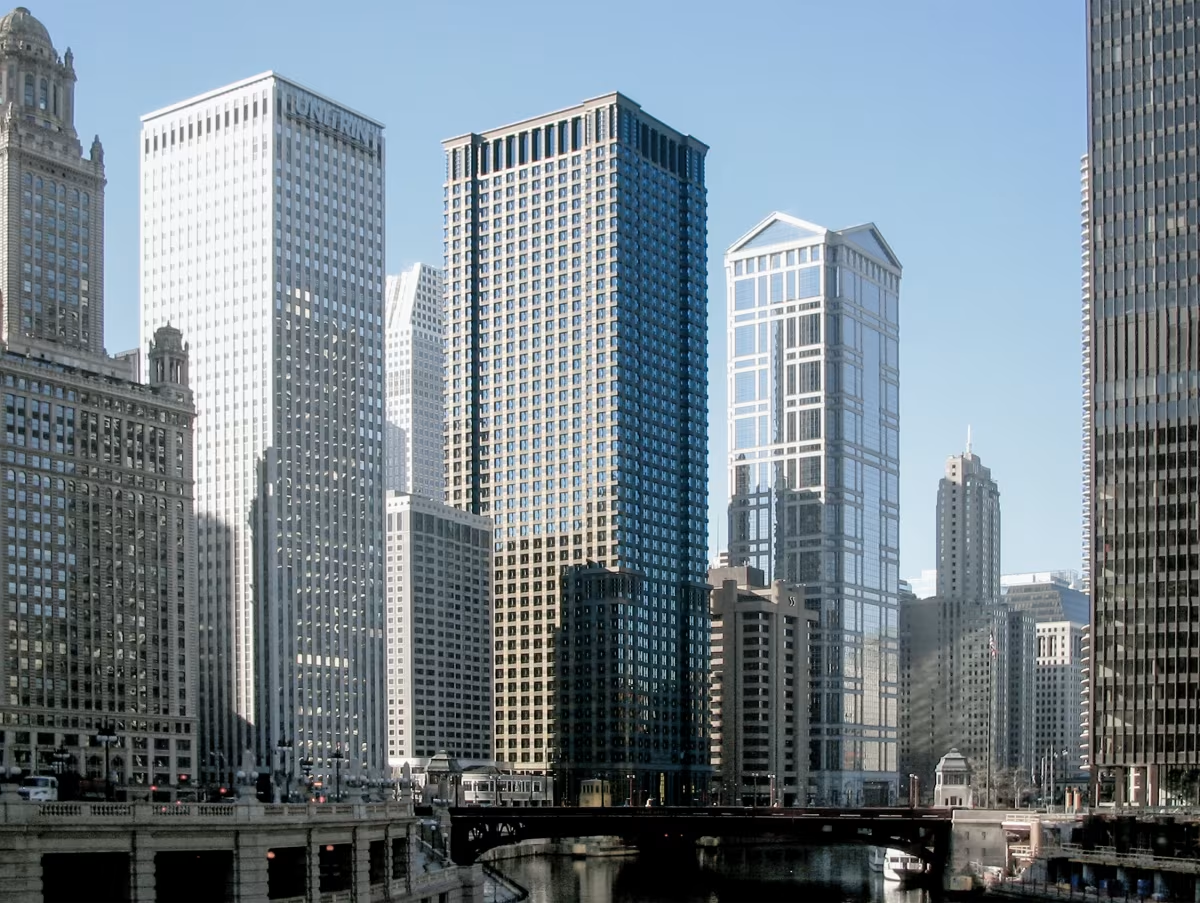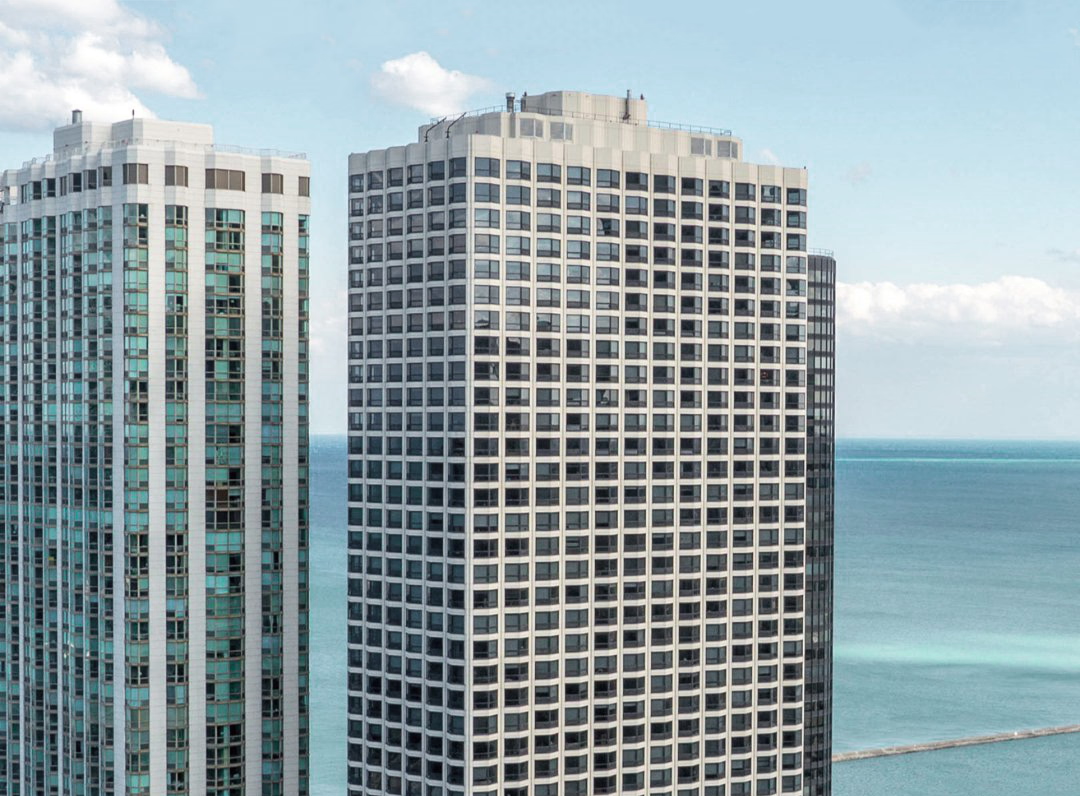Leo Burnett Building vs North Harbor Tower


Comparing the Leo Burnett Building and the North Harbor Tower is interesting because they both stand in Chicago, IL, and were completed just one year apart, but they were designed by different architects.
This offers a unique glimpse at how rival designers approached projects in the same city during the same era.
Height & Size
These two towers present an interesting contrast in their proportions. The Leo Burnett Building rises higher at 636ft (194m), while the North Harbor Tower reaches 554ft (169m). However, the North Harbor Tower accommodates more floors with 55 levels above ground, compared to 46 floors in the Leo Burnett Building.
This suggests different approaches to interior space design. The Leo Burnett Building has an average floor-to-floor height of approximately 4.2m, while the North Harbor Tower has more compact floors averaging around 3.1m each. The taller building's more generous floor heights might indicate grander interior spaces, higher ceilings, or different programmatic requirements.
These different proportions likely reflect the specific needs each building was designed to serve, whether driven by zoning regulations, client requirements, or the intended use of the spaces within. The contrast shows how architects can achieve different spatial experiences even when working with similar overall building scales.
Architectural Style
Both the Leo Burnett Building and the North Harbor Tower were designed in line with the aesthetic conventions of the Postmodernism style.
At the time, this style was at the height of its popularity. So both Roche Dinkeloo & Associates and Fujikawa Johnson & Associates followed what was in many ways expected of them, producing designs that fit comfortably within contemporary architectural norms, rather than breaking with convention.
Uses
The Leo Burnett Building is primarily commercial, while the North Harbor Tower is primarily residential.
The North Harbor Tower offers 600 residential units.
Both towers provide significant parking capacity, with Leo Burnett Building offering 113 spaces and the North Harbor Tower offering 404.
Structure & Facade
The two towers rely on different structural systems, reflecting distinct engineering strategies.
The Leo Burnett Building uses a Trussed Tube In Tube structural system, which combines a central core with a perimeter tube reinforced by diagonal bracing, while the North Harbor Tower uses a Frame system, that relies on a regular grid of columns and beams to sustain its weight.
Yet, when it comes to their facade, they both employed the same solution, a Window Wall facade.
A window wall system is installed between floor slabs. It is simpler and faster to build than curtain walls, but exposes slab edges and requires careful detailing to avoid thermal bridges.
| Leo Burnett Building | North Harbor Tower | |
|---|---|---|
| Roche Dinkeloo & Associates | Architect | Fujikawa Johnson & Associates |
| 1989 | Year Completed | 1988 |
| Postmodernism | Architectural Style | Postmodernism |
| Commercial | Current Use | Residential |
| 46 | Floors Above Ground | 55 |
| 194 m | Height (m) | 169 m |
| Trussed Tube In Tube | Structure Type | Frame |
| A Concrete Core And Steel | Vertical Structure Material | Concrete |
| Concrete And Steel | Horizontal Structure Material | Concrete |
| Yes | Facade Structural? | Yes |
| Green Granite, Glass, Steel | Main Facade Material | Glass, Concrete |
| Cohen Barreto Marchertas | Structural Engineer | Alfred Benesch & Company |
| IL | State | IL |
| Chicago | City | Chicago |
| 35 West Wacker Drive | Address | 175 North Harbor Drive |